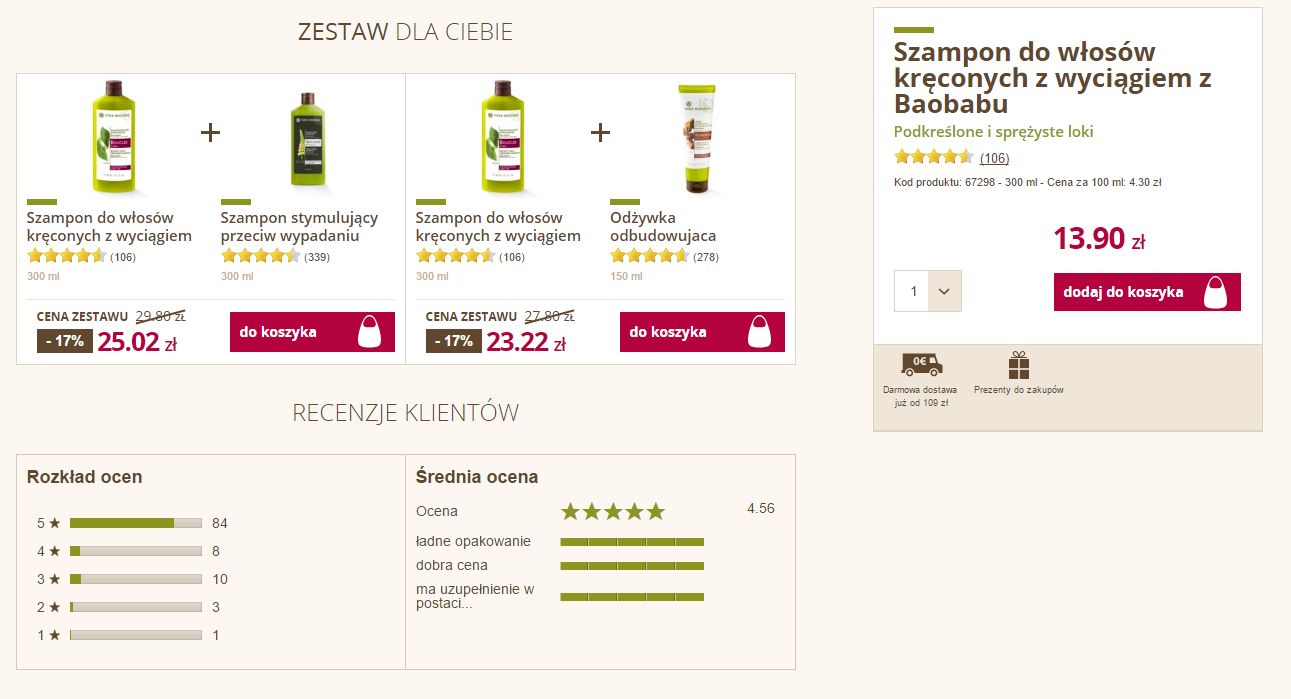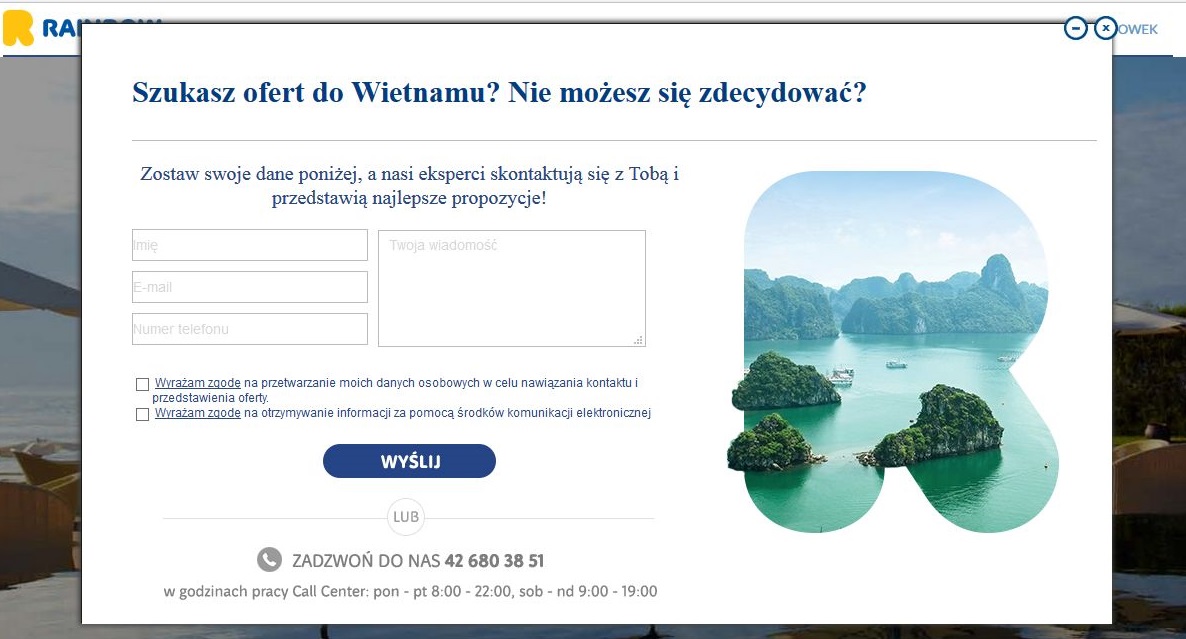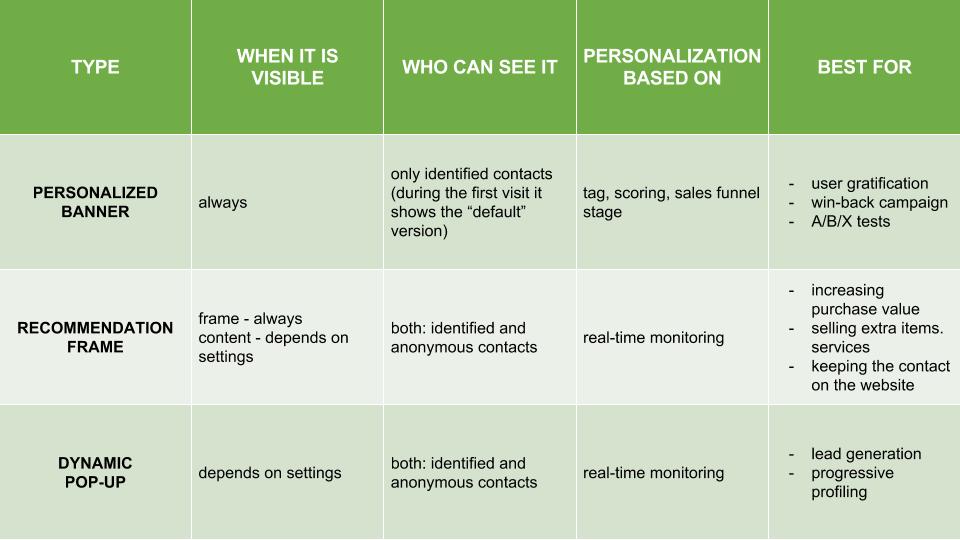
Dynamic is a popular word. The dynamic might be self-development, team or transportation. Dynamic can also be the content on the website. And boy, I ain’t talking about something like shining disco ball made of banners surrounding the text on the home page, or adding a gif with the model putting the advertised gloves on (though this idea is worth considering). True dynamic content is the one that reacts in the real time to the behavior and preferences of the user and uses behavioral and transactional data collected via the marketing automation platform.
How does it look like in real life?
Imagine that you enter a website where you can buy and pre-order tickets for events, concerts and other performances. You intensively browse events in your area, and you are particularly interested in games of your other half’s favorite sports team – you want to surprise her or him with the tickets for the first game of the season. Unfortunately, the season has not started yet, and you – as a person not fully oriented in the calendar of events – are concerned that you may miss the start of ticket sales, and thus fail to make such a wonderful surprise. Suddenly, in front of your eyes, a pop-up appears, and it has a logo of the exactly same team that you are interested in, and it says: “Unfortunately we don’t have tickets yet, but leave your address, and we will inform you when pre-order starts.” Of course, there’s also a blank field for entering an email address and the button “Submit”. I bet my dollars on doughnuts that you’ll leave your data faster than one can say “progressive profiling”!
Or another example. An online store selling fountain pens and accessories. You search for a pen in the middle price brackets, changing colors, producers, shape and material of the nib. Below you notice a picture of refills for just watched pens, extra ink pump, the ink itself and a few slightly more expensive and slightly better pens, but with lower prices than usually. It’d be a shame not click, right?
The strength of the content described above lies in three factors:
- the real-time reaction – exactly when you are interested in something and actively searching for it;
- content adequacy – it addresses your needs precisely;
- making the content rooted in context – the offer of sending information about pre-order launch shows when you are looking for specific sports tickets, not when you research next comic-con lineup
That’s how one of the features straight from the marketing automation platform works. Its purpose is to expand communication with visitors while using dynamic content on the website. There are three main tools available in this category: personalized banner, recommendation frame and dynamic pop-up.
Personalized banner
Banner is one of the constant elements of most websites. Most people associate it with the periodically replaced image incorporated into the store’s landscape. Don’t be mistaken though! This inconspicuous rectangle can display content tailored to user’s interests (if the user is properly tagged), her engagement level (scoring) or stage in the sales funnel, on which she is currently located. The basic difference between the banner and the other discussed tools is that during the first visit banner shows the image set as default and personalization occurs only during the next visits after identifying the contact.
Personalized banner is a perfect tool for:
- user gratification – it can display the discounts for the most engaged customers, freebies for people who make large or more expensive purchases, etc.;
- win-back campaign – with the proper automation rules and accurate system of tags you can use custom banners to display special offers and discounts to people who didn’t make a purchase for a long time, to encourage them to use the offer;
- target groups profiling – banners are perfect material for A/B/X testing, so they help you to spot trends in behavior and preferences of visitors and thus ease creating Buyer Personas.
Recommendation frame
Recommendation engines are very powerful mechanisms capable of keeping users on the website for a long time. If you don’t believe, think for a moment about the enormous commercial success of Netflix or YouTube. It works as it was described in the example with the fountain pen online store – more or less. Recommendation frames’ huge advantage is that they work almost instantly in the real-time – you are watching items (or services) from one category, and you immediately see the offer of the similar things, limited offers or complementary products. This recommending mechanism uses a huge number of variables – from simple interests to the shelf life of the product, to the behavior of other users who also bought it. Suggestion scenarios can be combined – you can show not only the standard “Users who bought this product also purchased” box but also a frame with the complementary products (refills and ink for a fountain pen), similar products, but with a higher price range, substitutes, etc.

While browsing products you see an offer of product sets that will save your time and money.
Source: http://www.yves-rocher.pl/
Recommendation frames are the best if it comes to multiplying the value of the transaction. One can use them to implement two techniques:
- cross-selling – selling extra complementary items and services;
- up-selling – offering more expensive items while the customer still has her wallet open.
“The advantage of the dynamic website content in recommendation frames is that they leaves us some space to maneuver. By combinig multiple scenarios we try to adjust the mechanism to the ecommerce’s profile to the fullest. It makes the dynamites perfect tool for every ecommerce!” SALESmanago Senior Product Manager
Dynamic pop-up
The pop-up is mainly imagined as a stubborn creation popping up with a tenacity worthy of a better cause that is shown to us in the same form and during each visit. Fortunately, thanks to marketing automation you’re not stuck with this despised intruder! The dynamic pop-ups let you show everyone the content referring to what she did, or still does on the page basing on the knowledge about her interests, her scoring, purchase history and even subpages which she currently browses. If you’re dealing with a first-time visitor – suggest the ebook, if with a client who recently bought something, then show her the complementary products. Or suggest tickets for a match of her favorite team, as it was described above.

If you browse travel offers from a specified country you’ll see a pop-up with a picture related to your interests and a proposition of the personalized offer.
Source: http://r.pl/
Dynamic pop-ups are the best when it comes to:
- lead generation – they can attract up to 1375% more subscribers than the sidebar form (source);
- progressive profiling – pop-ups can change with the consequent webpage visits.
As you can see, all of the described tools have their strong and weak points:

Should you implement dynamic content on my website?
Using one or more types of dynamic content on the page eases building relationships with customers, and can increase both the number of generated leads as well as sales and revenues level:
- dynamic pop-up implementation can increase website lead generation by 45% (case study);
- while compared with a static one, the dynamic pop-up can generate up to 38% more leads in the same time (SALESmanago data);
- personalized, dynamic communication is more efficient than the mass product communication by 1200% (case study);
- 30% of new users buy for the first time thanks to the recommendation frames (case study);
All used case studies can be downloaded here.
The “side effects” of implementing dynamic content on the website are:
- the increasing level of personalization along with spam content reduction;
- better relationship with the customer and faster loyalization
- saving customer’s time – recommendations spare her digging through a pile of non-related items
- increasing conversion rate and reduction of wasting the leads
How do you use your “dynamite”? Leave a comment and let us know!
 Follow
Follow
















